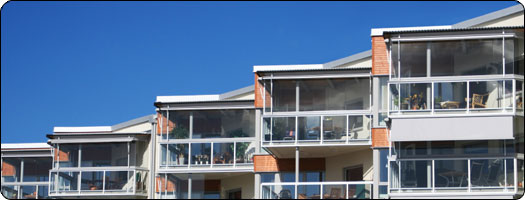
Flat Roofing
Average Rating
Rate This Article
Most Popular Roofing Cities
Related Articles
Roofing Contractor Roofing Costs: An In-Depth Breakdown Building Your Own Rooftop Garden Copper Roofing Corrugated Roofing Fiberglass Roofing Metal Roofing Rubber Roofing Steel Roofing The Future of Roofing 5 Ways to Fix a Leaky Ceiling Green Gutters A History of Rooftop Gardens How to Winterize Your Roof A Review of the iRobot Looj Gutter Cleaning Robot Solar Shingles get State of the Union Plug Atlanta Roofing Contractors and Projects Chicago Roofing Contractors and Projects Chicago Roofing CostsMost residential homes use have some kind of sloped roofing system. However, in recent years flat roofing has become a more viable option. A flat roof, as its name suggests, is horizontal roofing or nearly horizontal roofing (an extremely low slope). Flat roofs are generally easier and quicker for a roofing contractor to build and use fewer roofing materials, which could potentially save a lot of money. The biggest problem with flat roofing is their a tendency to cause leaks. The good news is that, newer flat roof materials are changing all of that.
Flat roofing systems were typically made from asphalt, particularly tar and gravel. Tar and gravel roofs can be extremely sensitive to human traffic or weather. These flat roofs have a tendency to crack or puncture, causing leaks and water damage. Flat roofing materials need to allow for water to run off freely from very slight inclinations; tar and gravel flat roofs tend to fail in colder climates, where ice dams can easily form, blocking the flow of water. Fortunately, newer roofing materials make flat roofs much more reliable.
The newest flat roofs use a continuous membrane covering that can protect your roofs better from pools of standing water. Popular flat roof membrane materials include synthetic rubber (EPDM - Ethylene Propylene Diene Monomer) and plastic (PVC - Polyvinyl Chloride). These membranes can be glued down directly to the roof sheathing, eliminating the need for gravel. Fiberglass flat roof are another popular alternative. Fiberglass roofing is a tough, durable building material that is strong enough to be walked upon. A more expensive option is metal roofing, which includes interlocking panels of copper or tin.
A licensed roofing contractor can further explain all of your flat roof options. With a roofing contractor you can even make a flat roof a living area by building a wooden deck or installing paving stones to protect your membranes from damaging foot traffic.





